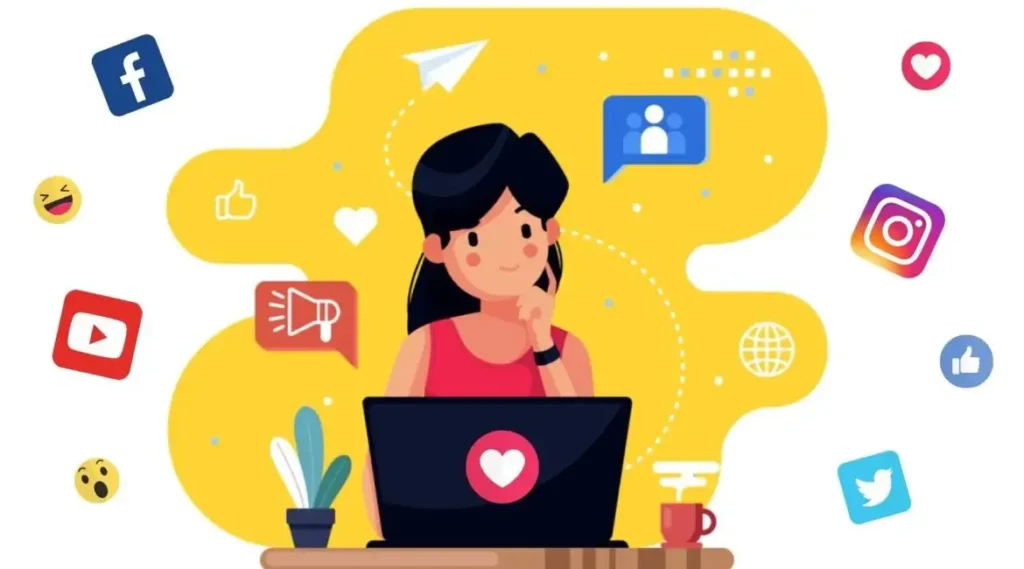By using the freemium ads model, people could adopt Facebook, Youtube, and Google products risk-free. fast forward 15 years and by now, people can’t imagine their lives without them. The transformation into the digital world is what has created the Web2.0 economy, which mostly focused on the interactive applications that allowed us to socialize, interact and make connections through the internet. that presented us with innovations that are now an inseparable part of our daily lives.
All of that infrastructure didn’t come cheap, over 1T$ has been spent on digital marketing over the last years, accelerating and driving the growth of the big tech companies. Marketing became the buying power of traffic which resulted in the capitalism of data. Facebook and Google became the strongest companies in the world that can manipulate us, turn our data against us, and sell that feature for the highest bidder. That ability got abused several times in the past (search for “Cambridge Analytica”) and left the reputation of the marketing industry mostly damaged.
A lot of people think that marketing is about manipulations and tricking techniques, but that’s a big mistake. What marketing is all about is matching the right brand with the right audience. Creating meaningful exposure for both sides, which will mostly drive brings ways of making life easier\better for the audience in exchange for their money. It is a must-have department in every company that ever existed, and probably one of the hardest arts to master.
Every one of us has met a company and thought to himself, “If they just had good marketing, they have been a big success”, well, that’s true, good businesses must have good marketing to succeed.
Web3.0 is here and the internet is transforming, we understand that we can’t build on top of Web2.0 applications, they have too much-centralized power aimed at the cause of making a profit for themselves. We need to build it in a way that brings the power back to the users, allowing them to control their data. That’s the idea of Web3.0, which raises the question, do we even need marketing in the decade of decentralization ahead of us? That’s an easy one, of course! Marketing is always a necessity, how else would you find out about new stuff? Just think about how you found this article to begin with. Marketing is also a serious revenue stream that many companies rely on in their business model. Offering free stuff in exchange for showing ads was the main source of income for most of the tech companies in silicon valley.
Marketing was how every innovation got adopted, it’s here since the print age, and will continue to make our lives better always!
It’s definitely going to look different on Web3.0, As the media evolves, the marketing industry must tailor itself to it. They go hand in hand together, and although it’s early for all of the Web3.0 apps to know what will go mainstream, we can accurately speculate a few of the things that will characterize the marketing industry in the Web3.0:

Transparency for the users and the brands is a key feature in the process of giving the users back their power. Everyone will know exactly how the data is being used and what data has been shared. By making this process transparent companies will be able to advertise this advantage for the user to choose what platform they want to use. The users will be more aware of giving away their data and could control what data they will decide to share with the apps. Imagine every bid, impression, click, or sale, all being exchanged for money on the blockchain. There are millions of Reddit posts on “Facebook Ads Problem”, and what all of those people have in common, is that they don’t know why is this problem happening, some of them think they got ripped off by Facebook, some of them don’t know why the ad did not get approved or why it stopped working. There is no support, no customer service, you can spend millions of dollars on advertising into their machines and hope that everything will work out for the best. On Web3.0 everything will be backed on the blockchain, so it’s not an option to keep you in the dark, you will always have the ability to investigate exactly what happened with every cent you paid in detail.

Community driven, as the power of tech monopolies breaks into pieces, a new era is coming, where the community can decide how they want the organization to evolve. The abstract concept is that Web3.0 Companies will bring value to their community by developing new things, and the community will stay loyal and invest in the company to influence decisions that represent the community interest. So the company valuation is determined by how much the community is willing to pay per stock/share, that stock/share is represented as a governance token that can be bought on public markets. That’s why this ecosystem is so powerful. It’s driven by the people who use it, if they are acting towards a change, something will change or they will invest in another company that will deliver. It’s a fair and open race that pushes the boundaries of supply vs demand in the tech industry in general, and in a dynamic growth environment, as we see in the marketing industry, it’s essential to hear your community and develop accordingly.

- Creators Economy, hard-working people who create the content that we all consume every day. blogs, posts, pictures, stories, entertainment videos, tutorial videos, lectures… you name it. There are people who invest their lives in creating content, but they are hardly rewarded, or not rewarded at all for it. A new standard will be made on Web3.0 that will profitably acknowledge their efforts. They will get to take a fair portion of the profits from every platform they will contribute to. Think about it that way, We are going into social media apps daily to see new content by our favorite creators, the platform placing ads on top of their content which results in profit for the social media company that did nothing but hosts the content. Don’t get me wrong, back in 2005 hosting on a good server was a big deal, which cost a lot of money and headache to solve, but thanks to the profitability of marketing (freemium ads model), this “social media free hosting” infrastructure evolved and became the most basic thing you can get. These days we as a society, are focused on bringing meaningful content to the platforms. A good creator is one who successfully brings value to its community. Every social media out there is going nuts trying to keep their creators inside, trying to lift the incentives with royalties, contests, and influencer marketing. But without transparency, the creators will always feel underappreciated for their work, because they know the business model of those companies is to pay them the minimum possible share of the profits. On Web3.0 the revenue distribution is automatic, transparent, and will utilize cryptocurrency for that task, so creators will get a fair share of the profit from their content. That will drive much more quality content, and could potentially be the biggest advantage for the next social media adoption.
To settle this article I’ll address one last question, How does this Web3.0 Marketing adoption will take place in the near future? There is a saying in marketing, rabbits eat more carrots than turtles, as every marketer knows, buying the best traffic at the lowest prices is ideal, and by adopting new platforms you can get exactly that. Promoting on Google can result in much higher costs than promoting on Bing, because where the competition is low, the bid is low, which results in cheap high-quality traffic. Most marketers don’t know how to monetize Tiktok because it’s relatively new, but those who succeed are killing it. Every successful marketer must be an early adopter of traffic opportunities. We have only one problem that remains to solve for those people, “How to scale?”. In order to get marketers to adopt marketing on the Web3, we first need to build a platform that will combine all the current(web2.0) marketing channels in one place, allowing marketers to create cross-channel promotions and control their budget across them. If you want to divide a 10K$ marketing budget between Facebook, Google, and Tiktok, you will have to compare data from 3 different platforms and make decisions on a daily basis to support that. It is very hard to navigate and mostly ends up choosing one platform to stick with.
By starting the Web3.0 Marketing platform in a community-driven way, the community will share their insights on the best new channels that are worth adopting, to drive the development of that channel into the multi-channel marketing platform. By creating and managing campaigns across different channels(that were suggested by the community) in one place, you can control everything with efficiency. And because it changes according to the community’s needs, the product will adapt to any change quickly (like the ios 14 update for example) and bring value to its marketer’s users.
The community will seek to add support for the Web3.0 apps, which will make the platform, the best cockpit for multi-channel marketing campaigns. That can easily be the bridge for the safe transformation of the campaigns into the Web3.0 channels. The platform will have to bring value and capabilities for handling the current channels(FB, Google…etc) among the new channels in order to provide a smooth transition for the marketers to increase their spending on Web3.0 platforms and crack the holly “chicken and the egg” problem.
Buski.





